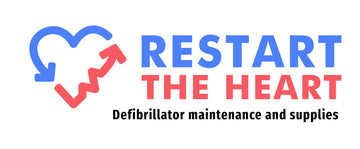Top Features to Look for in a High-Quality AED
Choosing the right Automated External Defibrillator (AED) is crucial for ensuring that you are prepared to handle cardiac emergencies effectively. With numerous options in the market, it can be overwhelming to identify which features are most important. A high-quality AED offers more than just the basic functionality; it incorporates key features that enhance safety, usability, durability, and ease of maintenance.
Understanding these essential features can make a significant difference in emergency scenarios. For instance, the device's safety functions, like automatic self-checks and fail-safes, ensure that the AED is always ready when needed. User-friendly interfaces with clear instructions can guide even an untrained person through the critical steps of defibrillation, potentially making the difference between life and death.
Moreover, the durability of the AED is a major consideration, especially in environments where the device needs to withstand various conditions. Consistent maintenance and reliable support are also imperative to keep the AED functional at all times. By focusing on these features, you can select an AED that not only meets but exceeds your needs, providing you with peace of mind and readiness in every situation.
Critical Safety Features
When selecting an AED, safety features are paramount. A high-quality AED includes automatic self-check mechanisms that ensure the device is always in working order. These self-checks assess battery life, pad connectivity, and other key functions. You will receive visual or audio alerts if there's an issue that needs addressing, allowing you to rectify problems promptly.
Another critical safety feature is the ability to provide real-time feedback during use. This includes voice prompts and visual cues that guide the user through each step of the defibrillation process, from applying the pads to delivering the shock. These features help ensure that the device is used correctly, maximising the chance of a successful intervention. Additionally, features like child-mode switch can adjust the energy levels for safer use on children, enhancing overall safety.
Ease of Use and User Interface
The ease of use is a crucial factor when choosing an AED, especially for environments where untrained individuals might need to operate the device. Look for AEDs with intuitive user interfaces that feature clear and straightforward instructions. Devices that offer text-based prompts, voice guidance, and visual indicators can make the defibrillation process more accessible.
AEDs designed with simplicity in mind often include one-button operations, where a single press powers the unit and initiates the self-check process. Another useful feature is pad placement diagrams directly on the unit or pad packaging, so users can quickly and accurately apply the pads to the patient. Additionally, some AEDs come with bilingual or multi-language support, accommodating users who may not be fluent in the primary language of the device.
By prioritising these aspects, you can ensure that the AED is easy to use, even in high-stress situations, increasing the likelihood of a successful outcome.
Durability and Reliability
Durability and reliability are essential in an AED, especially since these devices are often used in emergency situations. High-quality AEDs are built to withstand various environmental conditions, including extreme temperatures, dust, and moisture. Look for AEDs with high IP ratings, which indicate how well the device is protected against particles and water. A robust construction ensures the device will function properly regardless of where it's stored or used.
Another aspect of reliability is consistent performance. AEDs should come with rigorous testing certifications and approvals from recognised standards organisations. An AED that passes these tests assures you of its reliability and effectiveness. Additionally, many AEDs have long-lasting batteries and pads that hold up over extended storage periods. These features prevent unexpected malfunctions and ensure that the AED is ready to perform during critical moments.
Maintenance and Support
Proper maintenance is vital for keeping an AED in optimal working condition. High-quality AEDs often come with built-in self-check features that run diagnostics on a regular basis. These checks ensure the device, battery, and pads are functioning correctly. Clear indicators on the AED will alert you if any part of the device requires attention, making it easier to perform timely maintenance.
Support from the manufacturer or supplier is another crucial consideration. Reliable customer support and an accessible service network can provide peace of mind. Whether it's training, replacement parts, or technical support, having a dependable support system in place is invaluable. Additionally, ensure that the AED you choose has easily accessible and affordable replacement parts, such as batteries and pads, to simplify ongoing maintenance and reduce downtime.
Conclusion
Selecting an AED with the right features can significantly impact its effectiveness and reliability in emergency situations. Consider critical safety features, ease of use, durability, and maintenance requirements to make an informed decision. These characteristics ensure that the AED is not only ready to perform when needed but also easy for anyone to operate effectively.
By focusing on these key features, you can choose an AED that provides the highest level of preparedness and reliability. For high-quality AED options that meet these criteria, visit our AED supply store at Restart the Heart. Don't wait until it's too late—equip yourself with the best tools to save lives.

